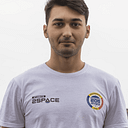The most unused muscles
How to improve your fitness training to start using these muscles
I am very keen on fitness and calisthenics in special, because of the timing, practical applications of power gained from exercises with bodyweight and the fun part of thte training — you don’t have to share some equipment with other guys taking up plenty of steroids which only takes selfies wherever in the gym they are. On the other hand he gym culture is very inspirational and long-term lasting despite some people who have misunderstood the purposes and needs of fitness.
What am I going to tell you here? Either if you are a runner, a gym passionate or doing calisthenics these are some 4 muscles which we use the least and you must give them a change in order to truly increase your muscular mass harmoniously and proportionally all over you body.
Anterior Tibialis
This muscle lies within the region of calf, along the tibia bone. Its purpose is the flexion of the tarsus on the tibia, also dorsiflexion. Moreover, it is involved in a secondly role of inversion of the tarsus. A very nice graphical and animated anatomical explanations can be found on this link. Both of them can be shown in the following picture:
The very best exercises that I can recommend are dumbbell raises on your tarsus — you may need some to catch tightly for the poise. If the weight is not that heavy and you are truly confident you may also test your stability and, hence, use no equilibrium bar. The second exercise would be dancing c-walk. What!? Yeah, you heard it. swinging your balance from your calcaneus to your finger toes, but raising your feet just 2–3 cm and doing it fast while keepeing your balance. If you do this in you living room traversing it 3 times from left to right and left again you will feel both your anterio rtibialis and soleus muscles on fire.
Inferior Trapezius
We all know the trapezius: it lays on the upper back from the bottom of the rig cage up to the shoulders. It is the most superficial muscle of the upper back having a more exterior layer compared to the lats or rear shoulders.
The trapezius might be well and easily trained. Nevertheless, in the conventional way you shall get more focus on the superior and middle fibers. Thus the back symmetry and ergonomics of the back are vanished. Building you trapezius with biggest focus on the lower fibers will turn into muscular gain with not only safety for your back posture, but also improvement as some kind of exercise related to physiotherapy for the upper back at the level of T10-T12 vertebrae. That part is very hard to decompress by body exercises if you use no massage and no chiropractic methods(you can do it by yourself if you’re not impregnate or didn’t undergo herniated disc surgery).
The most efficient exercises targeting this muscle are Y raises. You have 3 modalities to do that. First is lying on the floor with your face to the ground and thumbs up and raising your hands as in the Y letter. The second option with be from an oblique position with some smaller dumbbells and doing it very deeply. Last, but not least you can do it in the gym with some X cable raises — basically the right cable with the left hand and vice-versa.
Lower back
Comparing to the whole list I confess this muscle was chosen not for its unpopularity, but for the amazing lack of interest among excessive sportsmen and bodybuilders. Whatsoever, its importance also striking in the regular people’s lives when sitting on the chair too much, caring weighty bags and purses and some particular jobs might lead you up to scoliosis. The muscular and bone problem may be reversed at a young age and following proper healing schedule → a right posture, more physical activity and physiotherapy.
However, when vertebrae start to fail, the most exposed are the ones from that are connected to the pelvic girdle and immediately from above.
As part of the pelvic girdle is the sacrum bone and right above it lays L5. Right in that area I experienced myself during middle school and then in high school a lot of back pain. Sometimes the pain would take up to a few months persisting at some specific movements every single time.
Here you are again a link from kenhub.com, a very nice website on the topics of anatomy. Also for the ones in search of the healing process the whole key to heal is not to steer clear of weight and pressure on the back, but rather to do it increasingly and with properly warm-up because you want to feel pain: muscular pain after muscular effort. A very cool guru on the topic of lower back is lowbackability.com so give its online content a shot(he also has instagram)!
Sternocleidomastoid
Yes, that eerie muscle from the lateral part of the neck. It helps for fast responses during daily moments and not getting injured meanwhile having other activities. The variety of movements accomplished by sternocleidomastoid are:
- Flexion — bending you neck forward
- Extension — extending your neck backward
- Lateral Flexion: Tilting your head sideways
- Rotation: Turn your head left/right
Isometry of head and neck are key for a whole bunch of other activities. I truly recommend this post from posturedirect and this video from the musculoskeletal clinic. Give it a try!
Thanks
Thanks for reading, I truly appreciate. It is my very first article on anatomy, fitness and muscular activity among a bunch of computer science and programming articles. If you found it interesting leave some claps, a comment and share with your friends!
